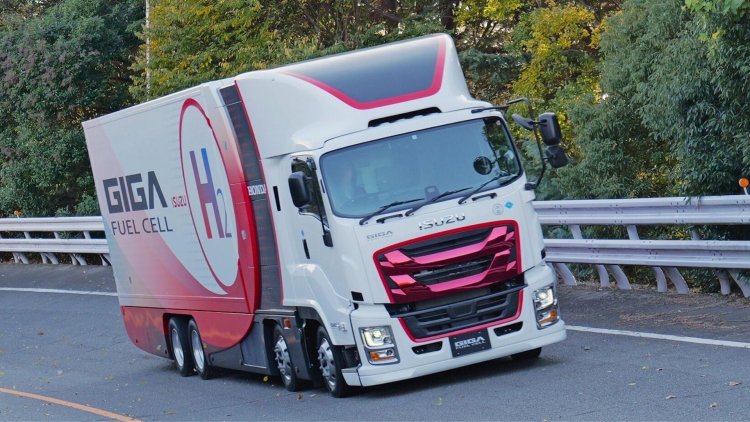Isuzu and Honda Test Fuel Cell Truck on Japanese Roads
To confirm the viability of using hydrogen fuel and the viability of FC trucks, demonstration testing of the GIGA FUEL CELL will be carried out on Japanese public roads with the assistance of Isuzu Logistics Co., Ltd. and Honda Logistics Inc., the logistics companies of the Isuzu Group and the Honda Group, respectively

Tokyo, Japan- Isuzu Motors Limited., and Honda Motor Co. Ltd., they began demonstration testing on public roads in Japan of the Giga Fuel Cell, a fuel cell (FC)-powered heavy-duty truck currently being co-developed by the two companies. Through this demonstration testing, scheduled to run through September 2024, the two companies will continue making progress in collecting data, amassing knowledge and identifying technical issues in preparation for a 2027 market introduction. The prototype model being used for this demonstration testing is the same type as the one exhibited at the Isuzu Group booth at the Japan Mobility Show 2023.
To confirm the viability of using hydrogen fuel and the viability of FC trucks, demonstration testing of the GIGA FUEL CELL will be carried out on Japanese public roads with the assistance of Isuzu Logistics Co., Ltd. and Honda Logistics Inc., the logistics companies of the Isuzu Group and the Honda Group, respectively.
Isuzu and Honda think that heavy-duty trucks that are meant to achieve high-efficiency transportation that is, trucks that can drive long distances, carry heavy loads, and refuel quickly will be able to achieve carbon neutrality through the use of fuel cells that run on hydrogen, which produces no carbon dioxide emissions. The two companies have been working on verifying the compatibility of the FC system and heavy-duty trucks as well as laying the groundwork for fundamental technologies like vehicle control technologies since signing an agreement in January 2020 to conduct joint research on FC-powered heavy-duty trucks. With the help of their combined research, the two firms want to fully utilize the technology, expertise, and knowledge acquired to launch the production model onto the market in 2027.


